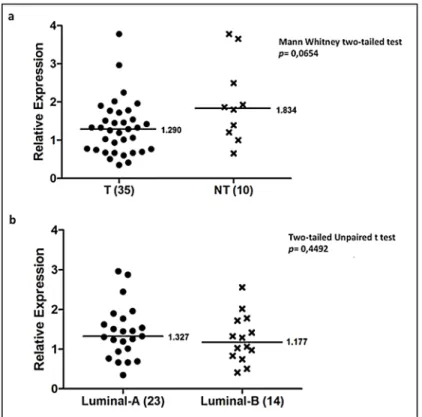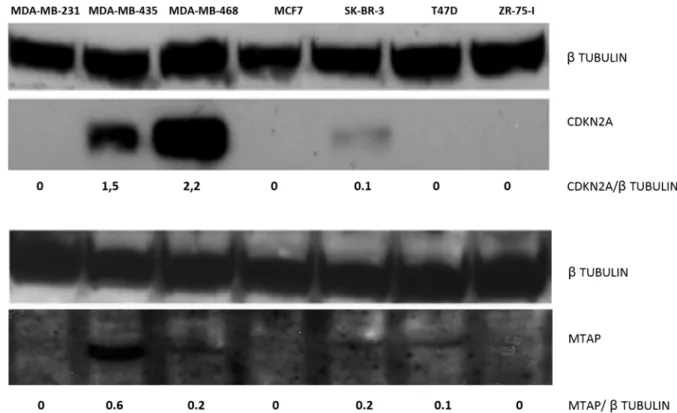Characterization of MTAP Gene Expression in Breast Cancer Patients and Cell Lines.
Texto
Imagem




Documentos relacionados
High PD-L1 expressing basal breast cancer cell lines (N = 12) demonstrate higher levels of STAT1 expression and lower levels of IRF2BP2 compared to low PD-L1 expressing cell lines (N
In fact, based on the high constitutive RANK expression in breast cancer specimens and cell lines, recent data suggest that RANK expression status of cancer cells determines
Combined analysis of E-cadherin gene (CDH1) promoter hypermethylation and E-cadherin protein expression in patients with gastric cancer: implications for treatment with demethylating
Elevated Oct1 protein expression also correlates with elevated ALDH HI and CD24 LO CD44 HI stem cell-like populations in tumor cell lines and primary breast cancer
Furthermore, miR-221 and miR- 222 expression was negatively correlated with ADIPOR1 mRNA levels across breast cancer cell lines as well as tumors derived from breast cancer
Increased expression of Rev3 in human breast epithelial cancer cell lines compared to non- neoplastic human breast epithelial cells MCF-12A, and in human breast tumors compared
Interestingly, we found that co-expression of RASSF1C and IGFBP-5 reduced PIWIL1 mRNA and protein levels in lung cancer cell lines, while co-expression of RASSF1A- RASSF1C did not
To overcome this hurdle for studying the functional role of Vav1 in human breast cancer, we overexpressed Vav1 in two breast cancer cell lines, AU565 and MCF-7, achieving Vav1
